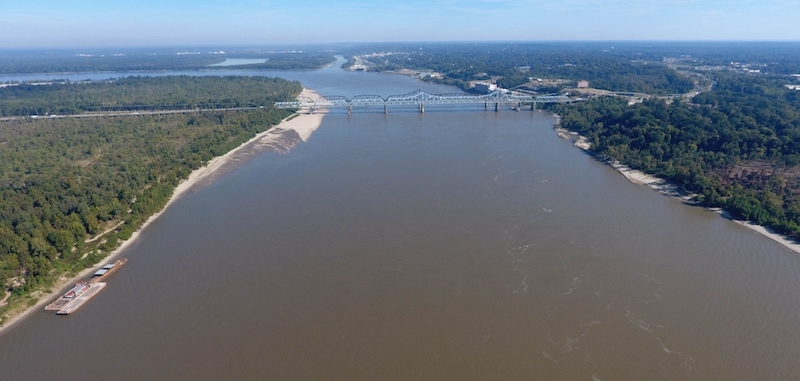The annual Gulf of Mexico dead zone is primarily caused by excess nutrient pollution from human activities in urban and agricultural areas throughout the Mississippi River watershed. When the excess nutrients reach the Gulf, they stimulate an overgrowth of algae, which eventually die and decompose, depleting oxygen as they sink to the bottom. The resulting low oxygen levels near the bottom of the Gulf cannot support most marine life. Fish, shrimp and crabs often swim out of the area, but animals that are unable to swim or move away are stressed or killed by the low oxygen. The Gulf of Mexico dead zone occurs every summer.
“Not only does the dead zone hurt marine life, but it also harms commercial and recreational fisheries and the communities they support,” said Nicole LeBoeuf, acting director of NOAA’s National Ocean Service. “The annual dead zone makes large areas unavailable for species that depend on them for their survival and places continued strain on the region’s living resources and coastal economies.”

A major factor contributing to this year’s above-average hypoxic zone are the high river flows and nutrient loads delivered to the Gulf this spring, primarily from the Mississippi and Atchafalaya rivers. In May 2020, discharge in the Mississippi and Atchafalaya rivers was about 30% above the long-term average between 1980 and 2019. The USGS estimates that this larger-than average river discharge carried 136,000 metric tons of nitrate and 21,400 metric tons of phosphorus into the Gulf of Mexico in May alone. These nitrate loads were about 2% above the long-term average, and phosphorus loads were about 25% above the long-term average.
The USGS operates more than 3,000 real-time stream gauges, and 35 long-term monitoring sites to measure nutrients in rivers throughout the Mississippi-Atchafalaya watershed. Data from these networks are used to track long-term changes in nutrient inputs to the Gulf and to help build models of nutrient sources and hotspots within the watershed.
"The annually recurring Gulf of Mexico hypoxic zone is primarily caused by excess nutrient pollution occurring throughout the Mississippi River watershed," said Don Cline, associate director for the USGS Water Resources Mission Area. “Information on where these sources contribute nutrients across the watershed can help guide management approaches in the Gulf.”
While the hypoxic zone forecast assumes typical coastal weather conditions, the measured dead zone size could be disrupted and its size could be changed by major weather events, such as hurricanes and tropical storms, which mix ocean waters, as occurred in 2018 and 2019. A NOAA-supported monitoring survey, scheduled for later this summer, will confirm the size of the 2020 dead zone, and is a key test of the accuracy of NOAA’s models.
The Mississippi River/Gulf of Mexico Hypoxia Task Force, a group working to reduce the Gulf dead zone through state led nutrient reduction strategies and targets across the Mississippi River watershed, has set a 5-year average measured size target of 1,900 square miles. The NOAA models help predict how hypoxia in the Gulf of Mexico is linked to nutrients coming from throughout the Mississippi River Basin. The Task Force uses them to help inform overall nutrient reduction targets across the watershed.
This is the third year NOAA is producing its own forecast, using a suite of NOAA-supported hypoxia forecast models jointly developed by the agency and its partners – teams of researchers at the University of Michigan, Louisiana State University, William & Mary’s Virginia Institute of Marine Science, North Carolina State University, and Dalhousie University and the USGS, who provided the loading data for the models. The NOAA forecast integrates the results of these multiple models into a separate average forecast and is released in coordination with these external groups, some of which are also developing independent forecasts.
NOAA and its partners continue to develop additional hypoxia forecast capabilities to understand impacts on living marine resources, the relationship between hypoxia volume and area, and how hypoxia changes through time and across the Gulf.




